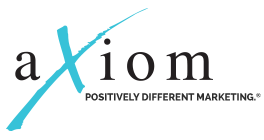
15 Dec Best Practices for Secondary Research
Research is arguably one of the most powerful tools in a marketer’s toolbox. Learning key insights about your industry, including competitor analyses, customer decision influencers, purchase journeys, even data collection processes can be instrumental for your business. Many companies conduct customized research of their own, known as primary research. Another type of research is secondary research. At Axiom, we do both, but let’s focus on the latter.
Secondary research is the research of reports, studies and data that has been gathered, analyzed, and published by others. One of the advantages of utilizing secondary research is cost and speed. It can be much cheaper and faster to complete compared to primary research.
An added benefit is access. Most secondary research is available online. That’s where Axiom identifies most our secondary research sources. When we recommend secondary research to clients, it’s primarily because the subject matter of interest is likely to have been addressed in a variety of ways and forms by others. Don’t reinvent the wheel, so to speak. The data is then compared, contrasted and analyzed in new ways to provide unique insights for clients. We follow a series of steps to ensure the right information is found and the project gets done efficiently and effectively.
- Set objectives for the project and identify a hypothesis for the outcome. Clear objectives help avoid the need for course correction. Since information is found in multiple sources and institutions, it’s imperative to stay focused on the outcome. Record objectives and keep them visible while you source information.
- Data sources, references and links are consolidated in a single, easily-accessible place. We track source names, authors, links (if found on the web), and important pages/paragraphs. A short synopsis helps to differentiate sources. This also allows cross-referencing; a particularly insightful research tool. Organization is key to success with research.
- Once everything is in place, we mine the data for the best information sources addressing our objectives and hypotheses, and focus on sources providing the most significant insights and information. That’s a vague statement but it’s all about quality sources, usually using the most current data sets. Universities, government agencies and trade associations typically contain a wealth of information that can be useful and unbiased. It’s at this stage that data-driven comparison, synthesis and discussion starts to take form.
- Lastly, not all research is free. Accessing secondary research is much less costly than fielding primary research, but expect many of the best sources to come with a cost associated to access the information.
After all of the information and data is identified and collected, deep analysis begins, keeping focus on fulfilling the project’s objectives and ensuring the hypothesis is fully vetted. If so, here comes the fun part; writing the final report.
If you have research questions or needs, reach out to our team, or email Matt at mmain@axiomcom.com.





No Comments